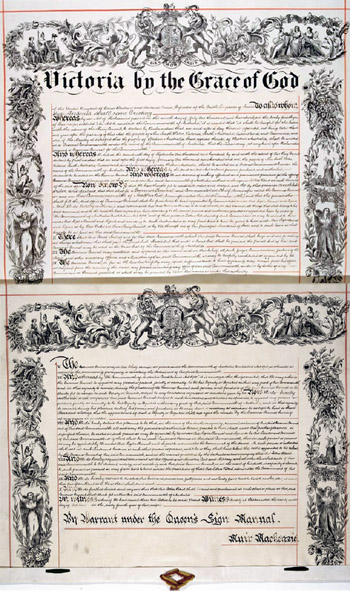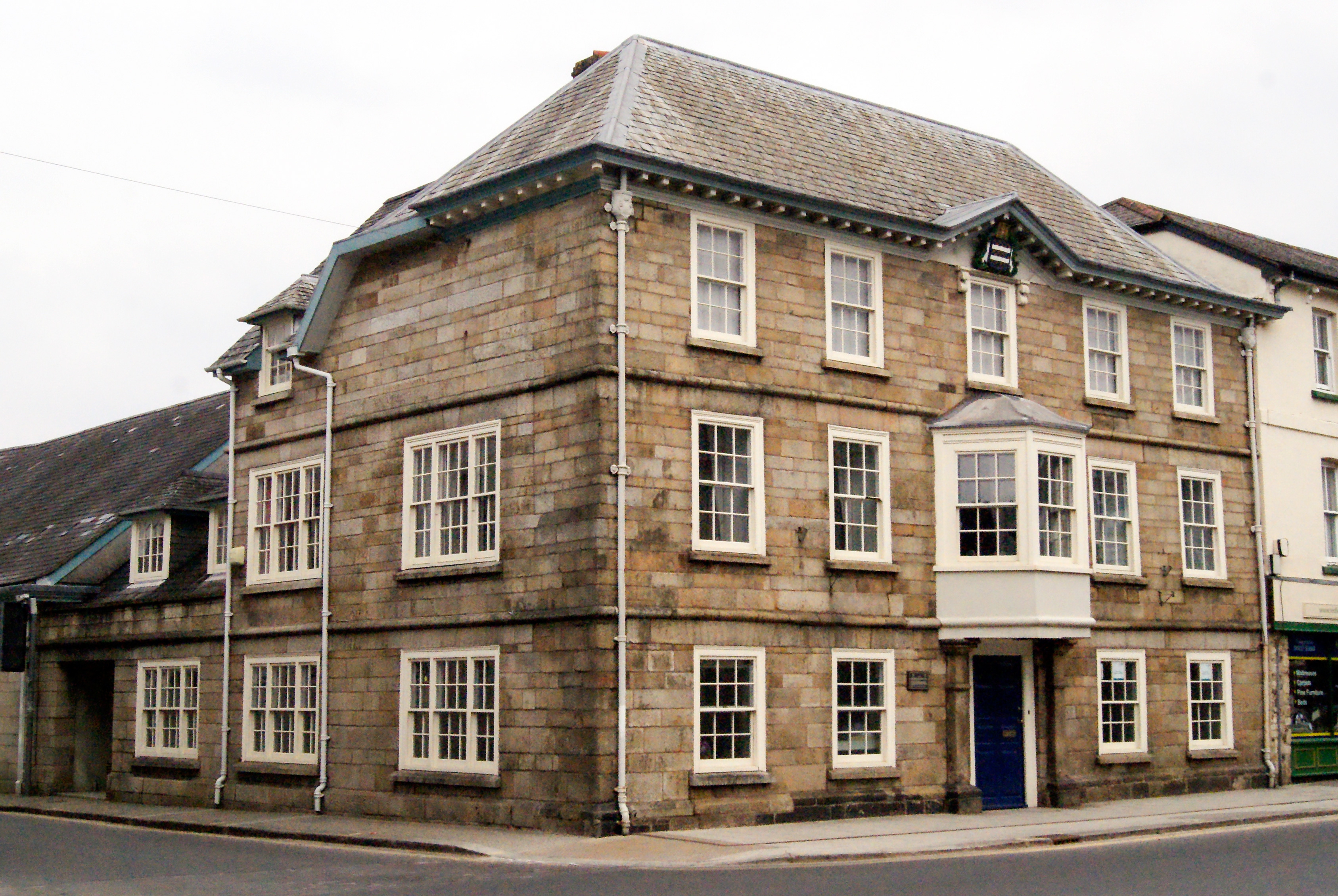|
Mount Radford, Exeter
Mount Radford is an historic estate in the parish of St Leonards, adjacent to the east side of the City of Exeter in Devon. Descent Radford *Lawrence Radford was the builder of Mount Radford House, during the reign of Queen Elizabeth I (1558–1603). In the words of the Devon historian Sir William Pole (antiquary), William Pole (died 1635): ''Uppon a little ascending hill did Lawrence Radford Esqr. bwild hym a fayre howse & called it Mount Radford''. *Arthur Radford, son, who sold it to Edward Hancock (died 1603), MP, Lord of the manor, lord of the manor of Combe Martin, North Devon. Hancock Edward Hancock (c. 1560–1603) Edward Hancock (c. 1560–1603) was the son and heir of William Hancock (died 1587) of Combe Martin. He was MP for Plympton Erle (1593), Barnstaple (1597) and Aldborough (1601). He matriculated at Trinity College, Cambridge in 1578 and entered the Inner Temple c.1580 and was called to the bar in 1590. He was Clerk of Assize on the western circuit in 1590. ... [...More Info...] [...Related Items...] OR: [Wikipedia] [Google] [Baidu] |
Maid Of Honour
A maid of honour is a junior attendant of a queen in royal households. The position was and is junior to the lady-in-waiting. The equivalent title and office has historically been used in most European royal courts. Tudors and Stuarts Traditionally, a queen regnant had eight maids of honour, while a queen consort had four. Queen Anne Boleyn had seven maids of honour and one mother of maids. A maid of honour was a maiden, meaning that she had never been married (and therefore was ostensibly a virgin), and was usually young and a member of the nobility. Maids of honour were commonly in their sixteenth year or older, although Lady Jane Grey served as a maid of honour to Queen Catherine Parr in about 1546–48, when Jane was only about ten to twelve years old. Under Mary I and Elizabeth I, maids of honour were at court as a kind of finishing school, with the hope of making a good marriage. Elizabeth Knollys was a maid of the court at the age of nine. Elizabeth gave gifts of ... [...More Info...] [...Related Items...] OR: [Wikipedia] [Google] [Baidu] |
Chipping Campden
Chipping Campden is a market town in the Cotswold (district), Cotswold district of Gloucestershire, England. It is notable for its terraced High Street, dating from the 14th to the 17th centuries. A wool trading centre in the Middle Ages, Chipping Campden enjoyed the patronage of wealthy wool merchants, most notably William Greville (d.1401). The High Street is lined with buildings built from locally quarry, quarried oolitic limestone, known as Cotswold stone, and boasts a wealth of vernacular architecture. Much of the town centre is a conservation area which has helped to preserve the original buildings. The town is an end point of the Cotswold Way, a 102-mile long-distance footpath. Chipping Campden has hosted its own Coldwold Games since 1612. History The name ''Chipping'' derives from Old English ''cēping'', meaning 'market' or 'market-place'; the same element is found in other towns such as Chipping Norton, Chipping Sodbury and Chipping (now High) High Wycombe, Wycombe. ... [...More Info...] [...Related Items...] OR: [Wikipedia] [Google] [Baidu] |
Aurelian Townsend
Aurelian Townshend (sometimes Townsend; c. 1583 – c. 1649) was a seventeenth-century English poet and playwright. Family Aurelian Townshend was the son of John Townshend of Dereham Abbey, Norfolk. Both Aurelian and his sister, Frances, were born before 12 December 1583, at which date they are mentioned in the will of Thomas Townshend of Crimplesham, Norfolk. Aurelian was a third cousin of Sir Roger Townshend and of the historian Hayward Townshend (c. 1577 – 1603×21). Townshend's mother was named Anne, and is said to have been the daughter of Sir Richard Catlin. Career Very little is well established about Townshend's life. Robert Cecil directed Aurelian's education and sent him to Europe to study. In Venice Anthony Sherley took his money. Within three years, Townshend was back in England. He then spent a year in France as Edward Herbert's friend and aide who "spoke French, Italian and Spanish in great perfection". He was not much help when Herbert was attacked by ... [...More Info...] [...Related Items...] OR: [Wikipedia] [Google] [Baidu] |
Letters Patent
Letters patent (plurale tantum, plural form for singular and plural) are a type of legal instrument in the form of a published written order issued by a monarch, President (government title), president or other head of state, generally granting an office, right, government-granted monopoly, monopoly, title or status to a person or corporation. Letters patent can be used for the creation of corporations, government offices, to grant city status or heraldry, coats of arms. Letters patent are issued for the appointment of representatives of the Crown, such as governors and governor-general, governors-general of Commonwealth realms, as well as appointing a Royal Commission. In the United Kingdom, they are also issued for the creation of peers of the realm. A particular form of letters patent has evolved into the modern intellectual property patent (referred to as a utility patent or design patent in United States patent law) granting exclusive rights in an invention or design. In ... [...More Info...] [...Related Items...] OR: [Wikipedia] [Google] [Baidu] |
Okehampton
Okehampton ( ) is a town and civil parishes in England, civil parish in West Devon in the English county of Devon. At the 2021 census, the parish had a population of 7,313, which was slightly more than the 7,104 recorded at the 2011 census. The Okehampton built-up area had a population of 9,112 at the 2021 census, up from 7,647 in 2011. Okehampton is situated at the northern edge of Dartmoor west of Exeter, north of Plymouth and south of Barnstaple. Toponymy The name means settlement or estate (''tun'') on the River Okement. This is shown by early forms of the name, such as ''Ochementone'' as recorded in the Domesday Book of 1086, and ''Okementon(a)'' in 1167 and 1275. The name was later associated with the common suffix Hampton (place name), ''-hampton'', but as late as the 1930s the original name was remembered by the pronunciation "Okington" or "Okenton" still used by old people in the district. History Okehampton was founded by the Saxons. The earliest written record ... [...More Info...] [...Related Items...] OR: [Wikipedia] [Google] [Baidu] |
Crediton
Crediton is a town and civil parishes in England, civil parish in the Mid Devon district of Devon, England. It stands on the A377 road, A377 Exeter to Barnstaple road at the junction with the A3072 road to Tiverton, Devon, Tiverton, north west of Exeter and from the M5 motorway. It has a population of 21,990. The town is in the narrow vale of the River Creedy, between two steep hills and is divided into two parts, the north or old town and the south and east or new town. History The first indication of settlement at Crediton is the claim that Winfrith or Saint Boniface was born here in c. 672. (text onlinhere) He propagated Christianity in the Frankish Empire during the 8th century and is the patron saint of both Germany and the Netherlands. In 909 a Episcopal see, see was established here with Edwulf as the first bishop. Bishop of Crediton, Nine more bishops ruled here until 1050, when Leofric, Bishop of Exeter, Leofric obtained papal permission from Pope Leo IX to tran ... [...More Info...] [...Related Items...] OR: [Wikipedia] [Google] [Baidu] |
Shobrooke
Shobrooke is a village, parish and former Manorialism, manor in Devon, England. The village is situated about 1 1/2 miles north-east of Crediton. It is located close to Shobrooke park. The river Shobrooke Lake flows through the village. It had a population of 537 according to the 2011 census. The name Shobrooke is derived from the old English words of succa and brōc, and translates as goblin brook. History Shobrooke has also been known as "Shobrook", the 1809 Ordnance Survey map refers the Parish and the village as Shobrook. Furthermore, in 1583 marriage records the village is once again referred to as Shobrook, it is not known if this was an error or the name of the village has evolved over time. The name itself has Anglo-Saxon origins, recorded in 938AD as Old English 'Sceocabroc' roughly translated as "Goblin brook" or "brook haunted by an evil spirit", this changed to Sotebroca in the Domesday book. In the 1870s, Shobrooke is described as: : A parish, with a village, in ... [...More Info...] [...Related Items...] OR: [Wikipedia] [Google] [Baidu] |
Dean Of Exeter
The Dean of Exeter is the head of the Chapter of Cathedral Church of Saint Peter in Exeter, England. The chapter was established by William Briwere, Bishop of Exeter (1224–44) who set up the offices of dean and chancellor of Exeter Cathedral, allowing the chapter to elect those officers. The deanery is at 10 The Close, Exeter. The current dean is Jonathan Greener. List of deans High Medieval *1225–1231 Serlo *1231–1252 Roger de Wynkleigh *1252–1268 William de Stanwey *1268–1274 Roger de Toriz *1274–1280 John Noble *1280–1283 John Pycot *1283–1302 Andrew de Kilkenny Late Medieval *1302–1307 Henry de Somerset *1307–1309 Thomas de Lechlade *1311–1326 Bartholomew de Sancto Laurentio *1328–1335 Richard de Coleton *1335–1353 Richard de Braylegh *1353–1363 Reginald de Bugwell *1363–1378 Robert Sumpter *1378–1385 Thomas Walkyngton *1385–1415 Ralph Tregrision *1415–1419 Stephen Payn *1419–1457 John Cobethorn *1457–1459 John Hals ... [...More Info...] [...Related Items...] OR: [Wikipedia] [Google] [Baidu] |
Baconsthorpe
Baconsthorpe is a village and civil parish in the North Norfolk district of the English county of Norfolk. It is south-east of Holt, south of Sheringham and north of Norwich. Population and governance The civil parish has an area of 5.53 km². In the 2001 census it had a population of 232 in 105 households. This eased to 215 at the Census 2011, and was estimated at 216 in 2019. For local government, the parish is in the district of North Norfolk. Heritage The village's name derives from "Bacon's outlying farm/settlement", Bacon being the surname of the local landowner in Norman times. The ruins of the 15th-century Baconsthorpe Castle lie about to the north of the village. The medieval Anglican Church of St Mary was restored in 1868 and 1958. It contains monuments from the 15th–18th centuries and some 16th-century glass saved from the castle. Accommodation There is a tourist campsite with full amenities at Pitt Farm near the west end of the village. Some bed-and ... [...More Info...] [...Related Items...] OR: [Wikipedia] [Google] [Baidu] |
Worshipful Company Of Goldsmiths
The Worshipful Company of Goldsmiths (commonly known as ''The Goldsmiths' Company'' and formally styled ''The Wardens and Commonalty of the Mystery of Goldsmiths of the City of London''), is one of the Great Twelve Livery Companies of the City of London, headquartered at Goldsmiths' Hall, London EC2. The company, which originates from twelfth-century London, received a Royal Charter in 1327 and ranks fifth in precedence of the City Livery Companies. Its motto is ''Justitia Virtutum Regina'', Latin for ''Justice is Queen of Virtues''. History Established as a medieval guild for the goldsmith trade, the term ''hallmarking'' derives from precious metals being officially inspected and marked at Goldsmiths' Hall in the City of London. In 1812, twenty almshouses were built on the former Perryn estate in Acton, on land bequeathed to the company by Alderman John Perryn in 1657. In 1891, the Goldsmiths' Company founded the Goldsmiths' Technical and Recreative Institute, bec ... [...More Info...] [...Related Items...] OR: [Wikipedia] [Google] [Baidu] |






